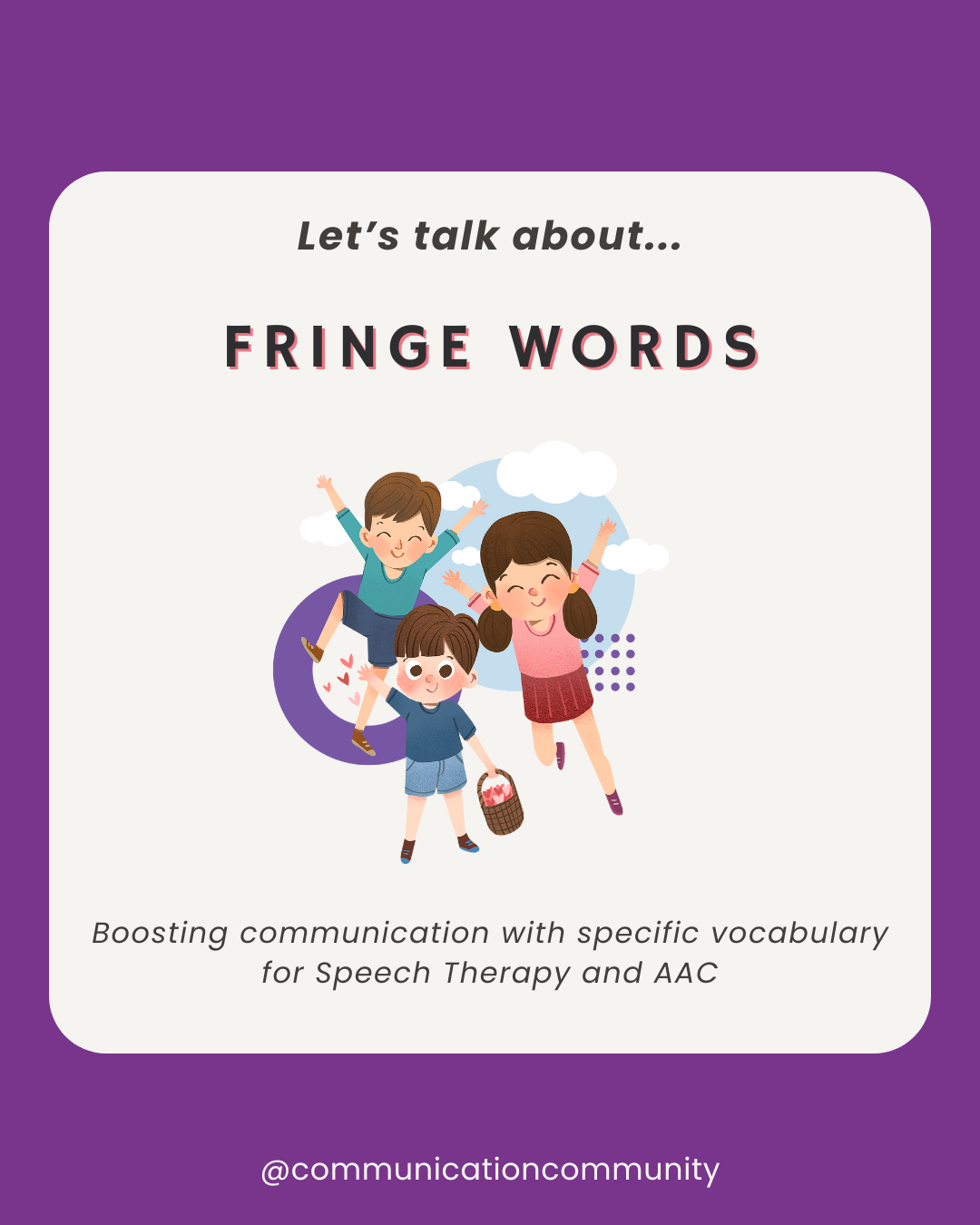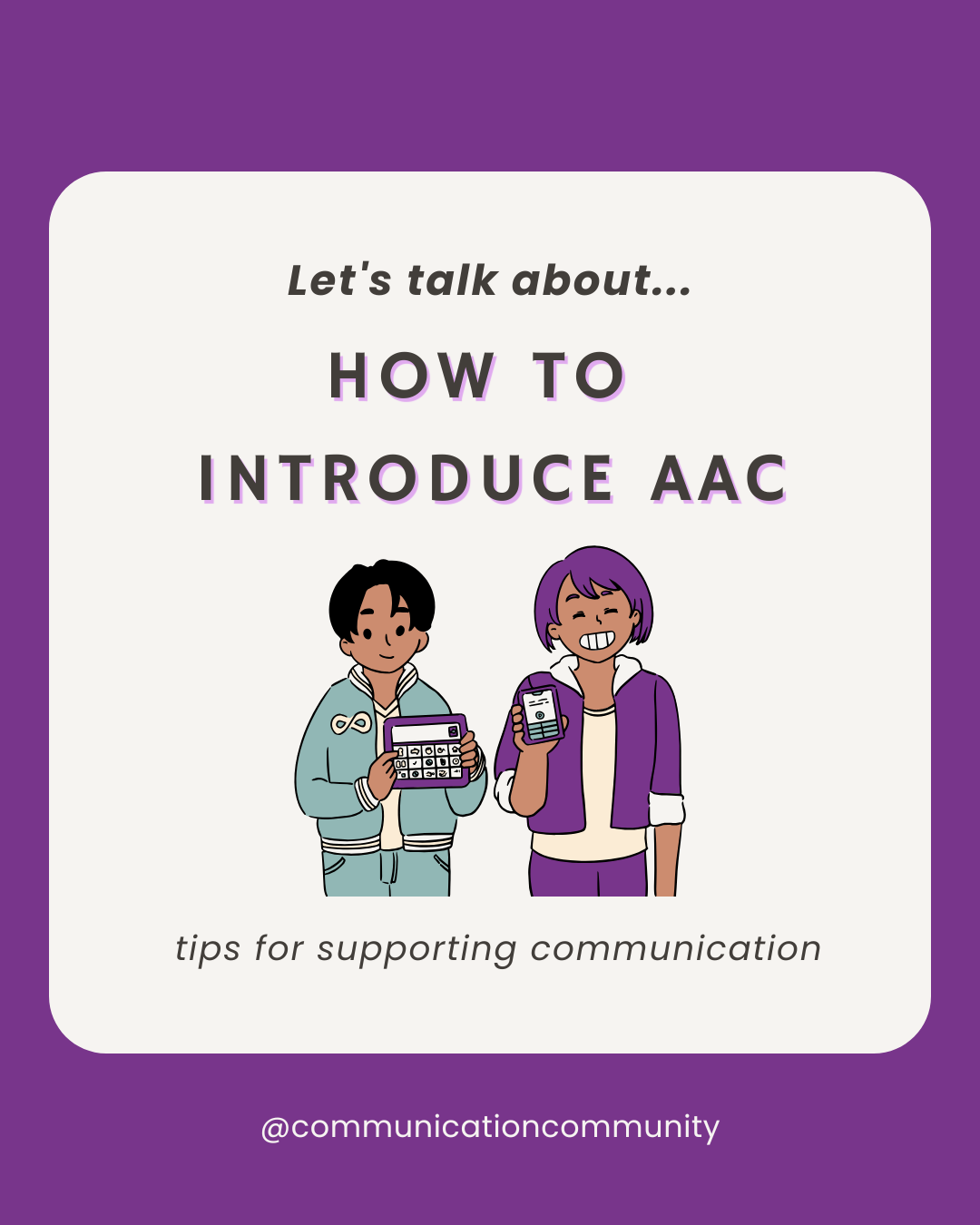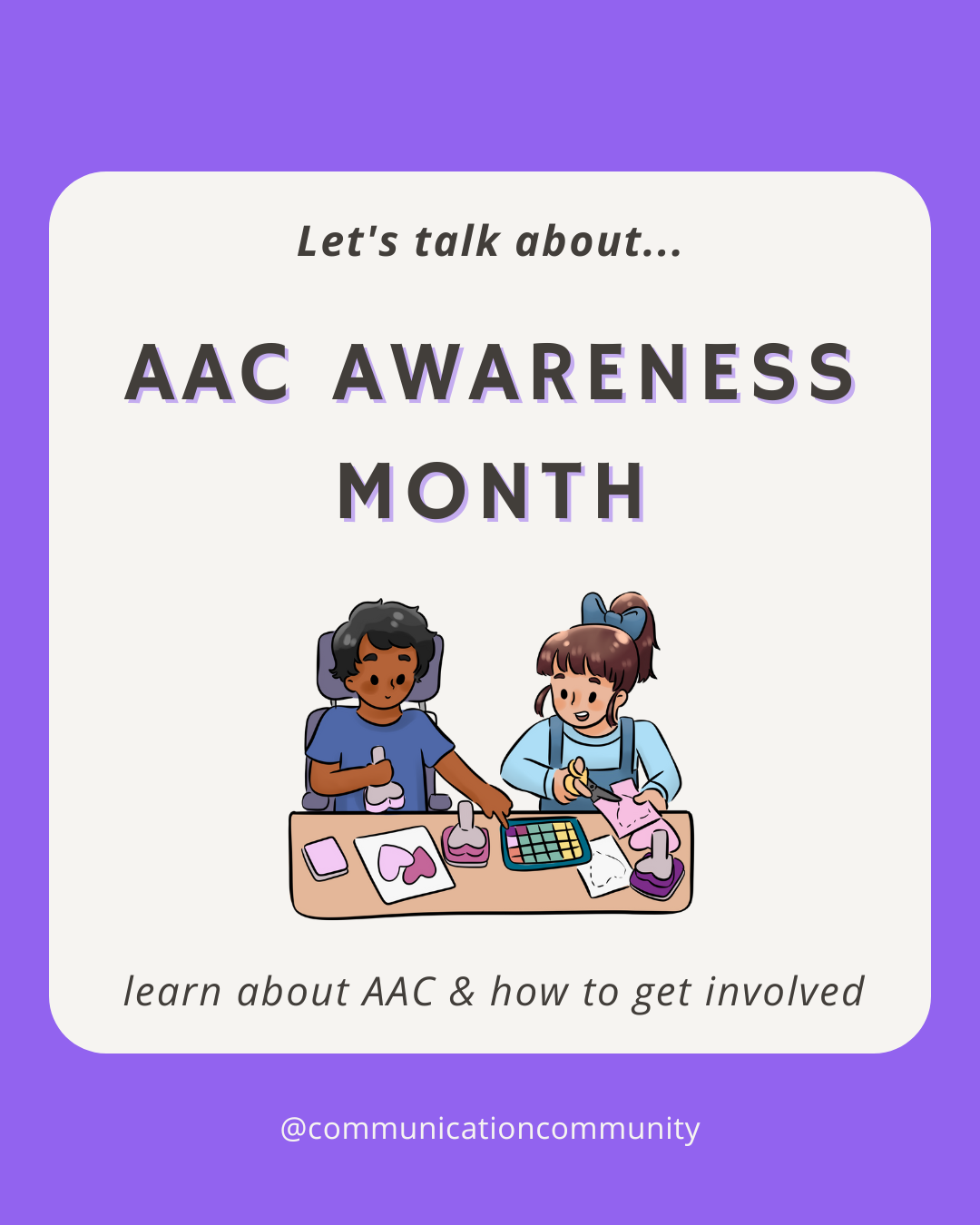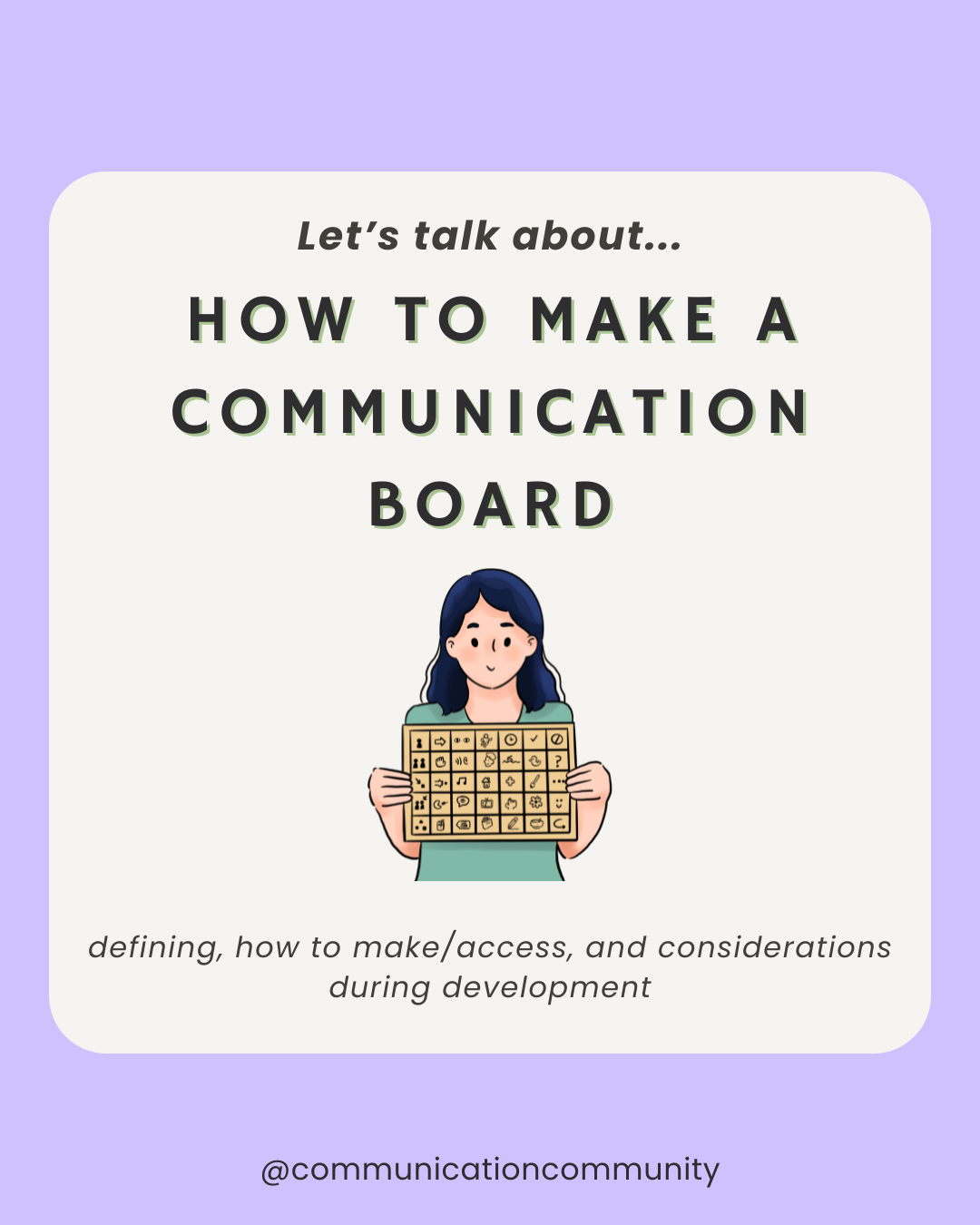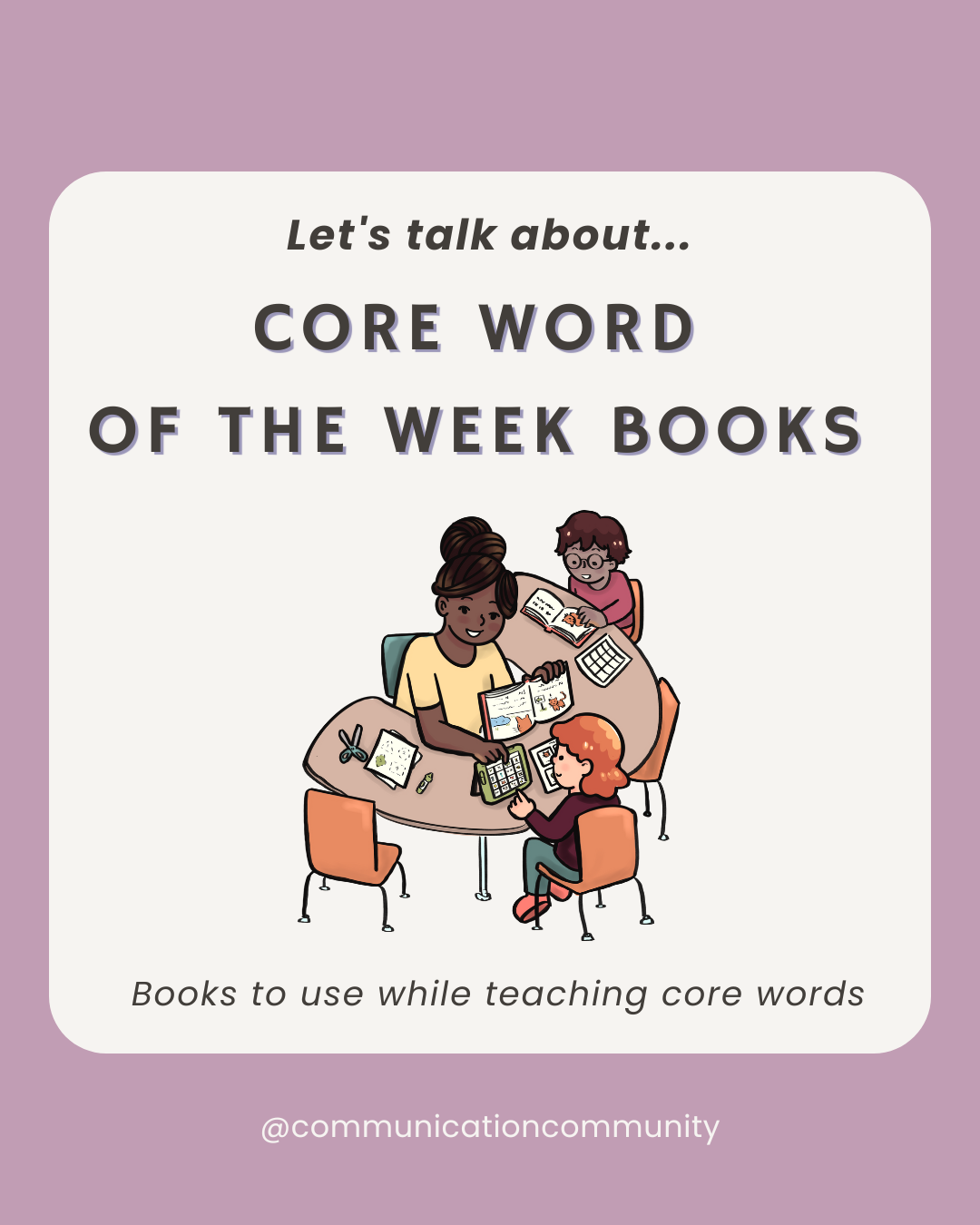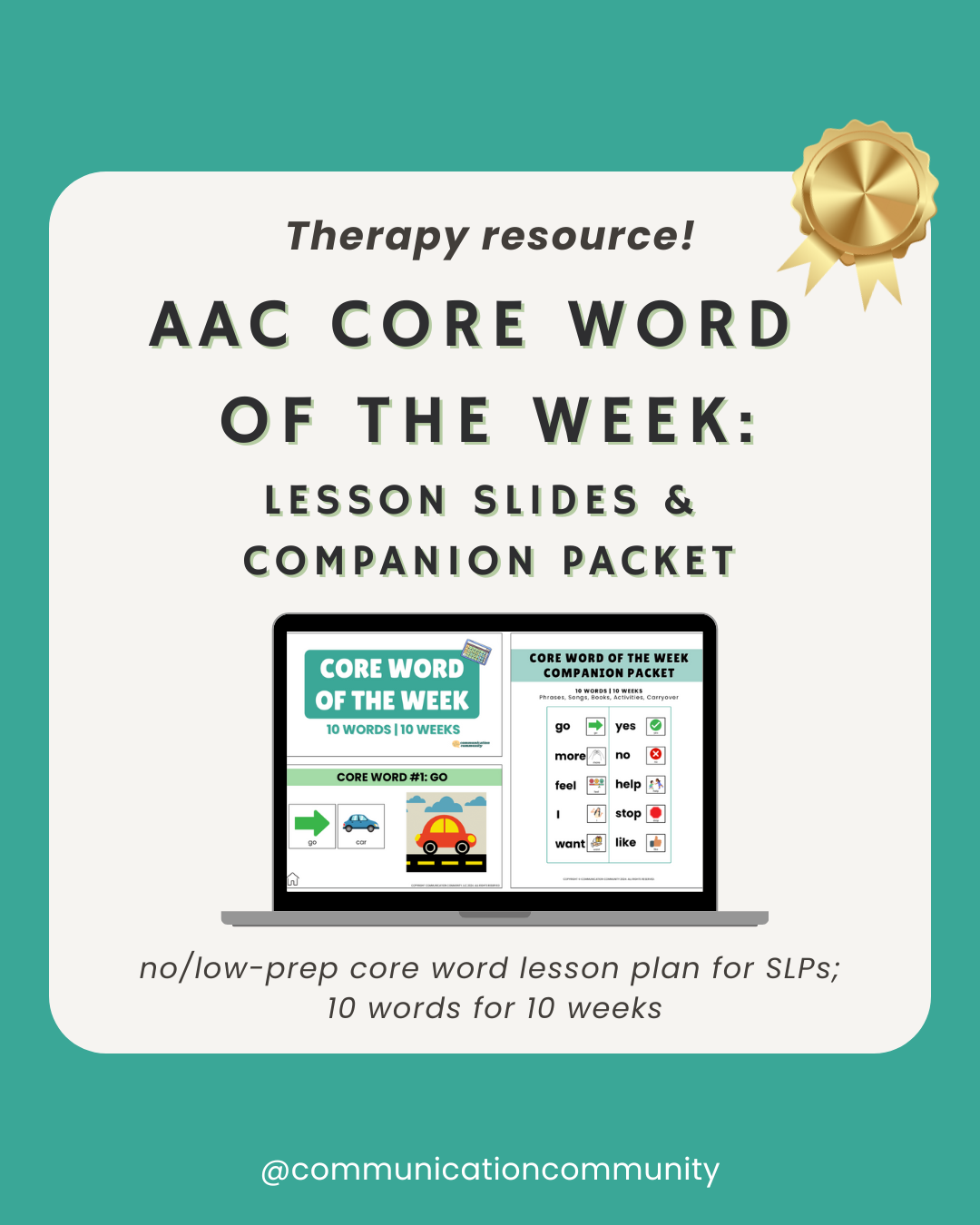Fringe words, sometimes called fringe vocabulary, refer to the vocabulary that is specific to a topic, individual, or environment. In our previous post about core words or core vocabulary, we discussed how core words were the vocabulary we used most frequently in our day-to-day communication, making up about 80% of the words used every day. The approximate remaining 20% of our vocabulary are considered our fringe words.
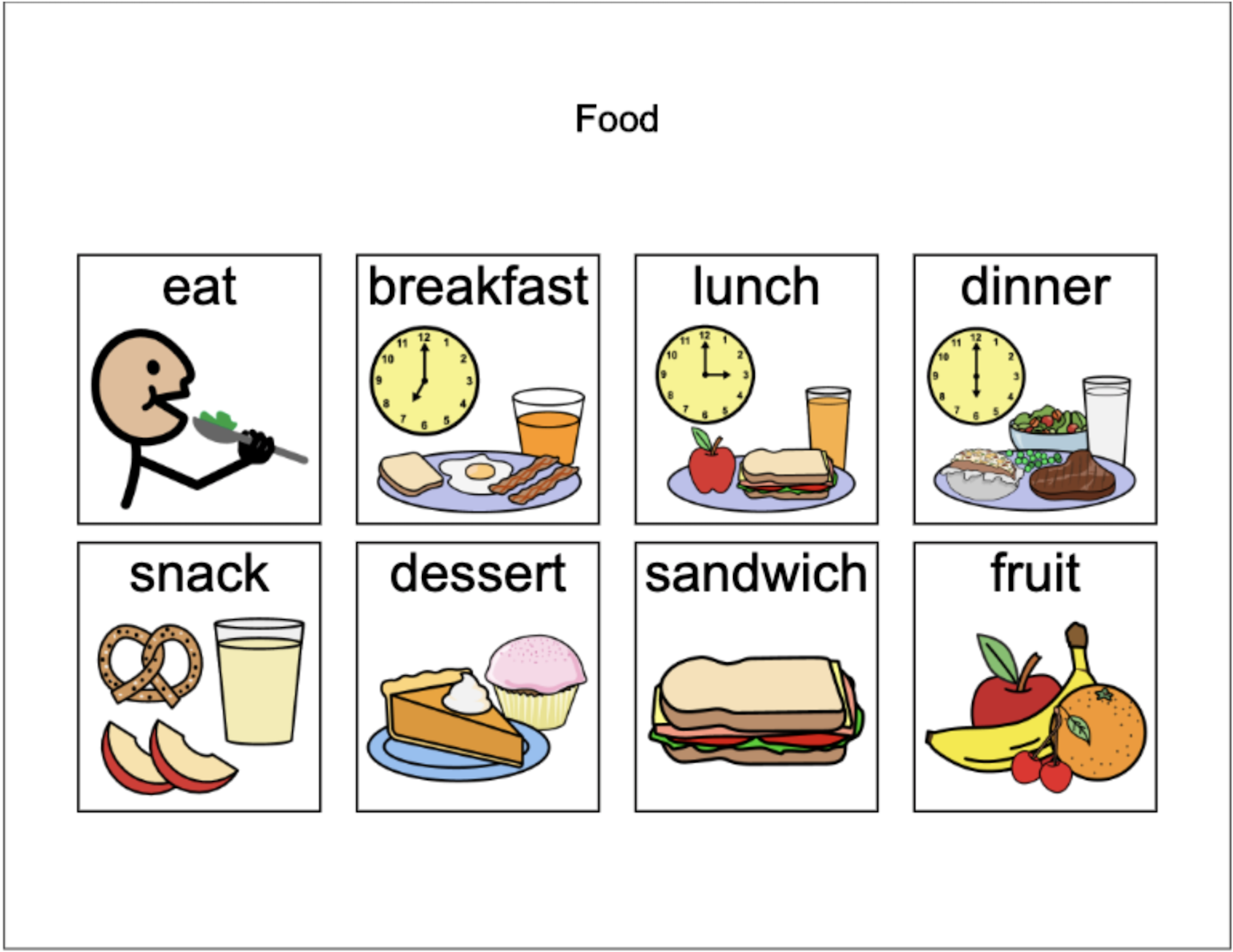
How are Fringe Words Different From Core Words?
While an individual’s core words vocabulary may consist of up to 200 total words, their fringe vocabulary may consist of thousands or tens of thousands of words. That is a huge difference! Another big difference is the type of words in one’s fringe vocabulary repertoire; fringe words usually consist primarily of nouns/proper nouns (persons, places, or things). Core words usually consist of types of speech other than nouns (e.g. verbs, pronouns, descriptors)
As mentioned earlier, fringe words are often specific to a topic, individual, or environment. The word “I” is used in almost any communication interaction throughout the day, but the word “apple juice” is typically used in limited contexts (i.e. to talk about the drink apple juice). As you may have noticed, “apple juice” is a noun, and “I” is a pronoun, which aligns with the general rule that a core word is usually not a noun, and a fringe word is usually a noun.
Also highlighted in our post about core words, Language During Mealtime created a great video on core and fringe vocabulary!
Choosing Vocabulary for AAC Devices
Choosing vocabulary to put on an individual’s AAC system can seem challenging or overwhelming, but guidelines from an article on ASHA provide some clear insight. The table below highlights the main points.
| 4 Things to Think About When Selecting Vocabulary for AAC Devices |
|---|
| The contexts/environments where the vocabulary will be used (school, home, community). |
| How long the vocabulary will be relevant (is this a one time event or will it span many weeks/months. |
| If the vocabulary will allow an individual to initiate and continue communications with others |
| If the vocabulary will facilitate developmentally appropriate grammatical structures |
Looking at these guidelines reinforces the importance of core words in AAC. The implementation and use of core words are relevant to all of these guidelines. However, fringe vocabulary is useful and important for expanding communication. Both vocabularies balance each other in a meaningful way!
Fringe Vocabulary for AAC
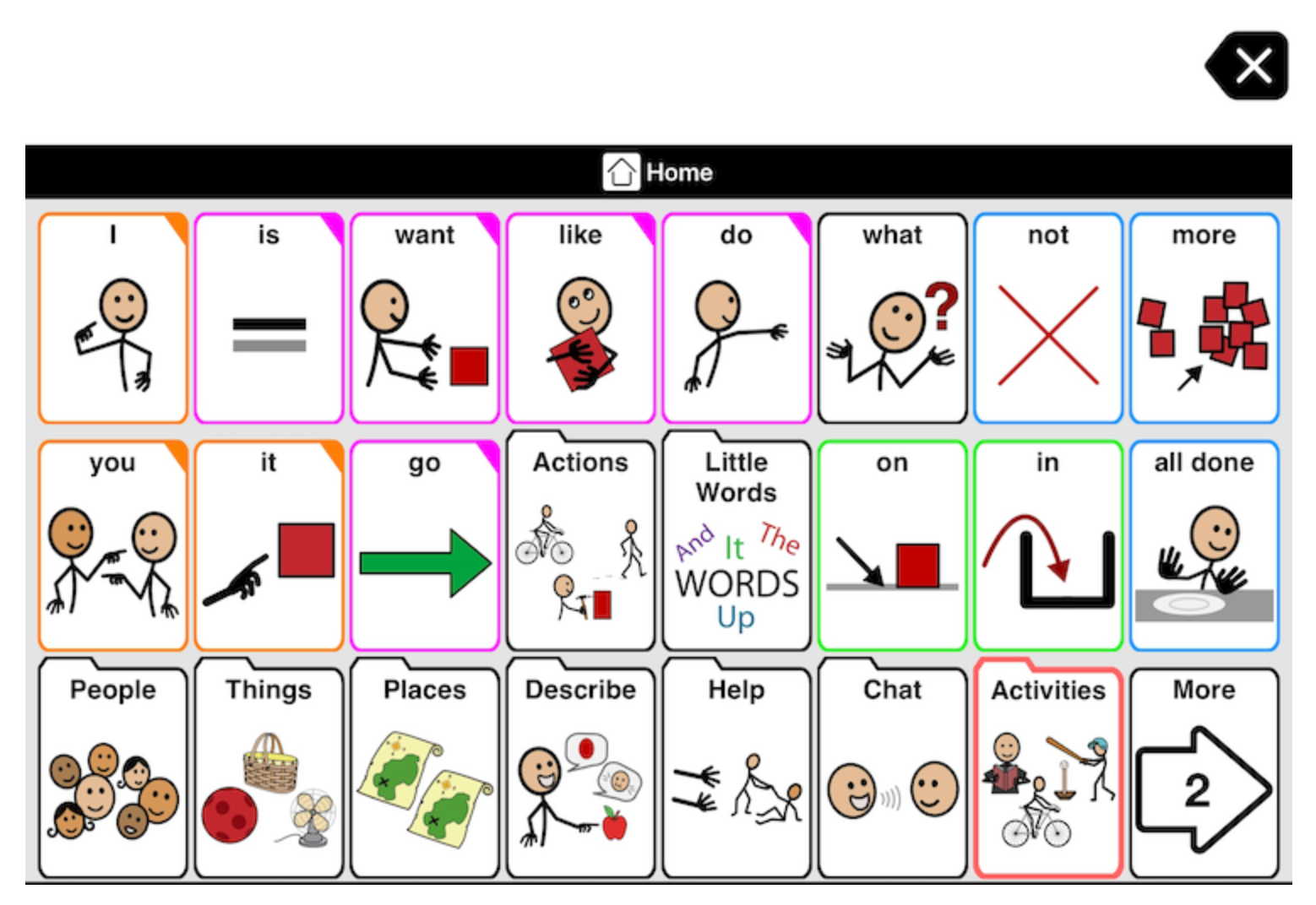
Core words can make up a large proportion of vocabulary on an individual’s home page within their AAC system (e.g., speech generating device/SGD), whereas fringe vocabulary is typically found within category/subcategory folders. In the photo above, the word “ball” may be found in the “Things” folder, so an individual would press the button Things, then find the button “ball.” Using both core vocabulary and fringe vocabulary allows an individual to build language, as they can learn how to create the sentence “I” + “want” + Things “ball.”
In this example, you can see that the folders include Things, Places, People, and Chat, among others. Vocabulary in these folders is often specific to the individual (e.g. fringe vocabulary is more specific to context). So “Things” may have some of their favorite objects/items and “People” may have members of their family, caregivers, friends, and community people (e.g. “doctor”, “barber”). A Things folder for me would likely have my phone, headphones, Kindle, whereas yours may have iPad, book, and ball. A People folder would include the name/pictures of people I see/talk to most often, and they are probably very different from the people you see/talk to most often. Other folders with fringe vocabulary may include Food/Drink (e.g. apple juice) or Needs (e.g. sunglasses, hearing aids, wheelchair, mask, wallet).
| A Home page with mostly core words may look the same for many individuals, but Category/Subcategory folders with mostly fringe words may look very different for different individuals |
|---|
Low Tech and Mid Tech Devices and Fringe Vocabulary
Most of the discussion about core and fringe vocabulary refers to an individuals' high tech AAC devices (e.g., SGDs), but they can be applicable to low tech and mid tech AAC devices as well. Typically, low tech and mid tech AAC devices have more core vocabulary than fringe vocabulary, though fringe vocabulary may be included. In these situations, fringe vocabulary is typically limited (i.e. not the thousands of fringe vocabulary words mentioned earlier), but may be specific items highly relevant/motivating to the individual. I have had clients use low tech devices with fringe vocabulary that included some of their favorite activities (e.g. walk, TV), so that they could request these specific activities.
There is usually more fringe vocabulary within high tech AAC systems because these devices usually have the capacity to contain an extensive and more comprehensive vocabulary base. Low tech AAC devices, where vocabulary may be limited, may include a few highly relevant core words/phrases and a few fringe words.
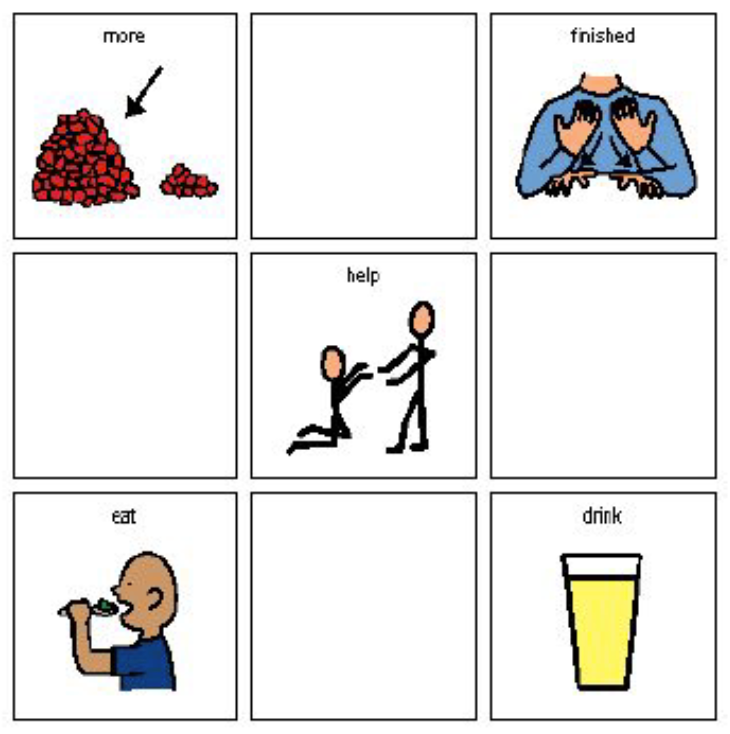
Overall, a robust language system for an individual (an AAC user or not), contains both core and fringe vocabulary. Core vocabulary is used the most often but fringe vocabulary allows an individual to talk about specific things, events, or people relevant to their life and environmental context.
Using core vocabulary and fringe vocabulary allows an individual to develop the skills needed for using proper grammar and sentence structure, while also communicating about their specific needs, wants, and interests.
Looking for more? Check out our post on How to Choose Fringe Words!
What are some of your favorite fringe vocabulary words? Right now, I would say mine are “coffee,” “air conditioning” and “Netflix.”
Citations/further resources:
https://pubs.asha.org/doi/10.1044/2019_ajslp-18-0041
https://aacinstitute.org/core-vocabulary-and-the-aac-performance-report/
https://praacticalaac.org/strategy/join-together-core-fringe-vocabulary/
https://www.cornwall.gov.uk/media/37627255/core-and-fringe-vocabulary.pdf

